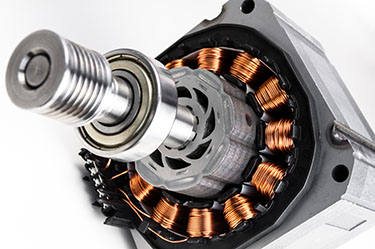Tools With Brushless Motors - Brushless vsBrushed Motor
The Only Guide for Brushless Motors - PowerTEC Industrial Motors
Simultaneous electric motor powered by an inverter The motor from a 3. 5 in floppy disk drive. The coils, organized radially, are made from copper wire coated with blue insulation. The rotor (upper right) has actually been removed and turned upside-down. The grey ring inside its cup is an irreversible magnet.
DC brushless ducted fan. The 2 coils on the printed circuit board interact with six round permanent magnets in the fan assembly. A brushless DC electric motor (BLDC motor or BL motor), also called a digitally commutated motor (ECM or EC motor) or concurrent DC motor, is a synchronous motor using a direct current (DC) electric power supply.
The controller adjusts the phase and amplitude of the DC existing pulses to control the speed and torque of the motor. This control system is an alternative to the mechanical commutator (brushes) utilized in many conventional electric motors. The building of a brushless motor system is generally comparable to a long-term magnet synchronous motor (PMSM), but can also be a switched unwillingness motor, or an induction (asynchronous) motor.

The advantages of a brushless motor over brushed motors are high power-to-weight ratio, high speed, nearly rapid control of speed (rpm) and torque, high effectiveness, and low maintenance. Brushless motors discover applications in such locations as computer peripherals (hard disk drive, printers), hand-held power tools, and lorries ranging from model airplane to vehicles.


Brushless DC Motors - RapidPower™ Xtreme Brushless DC for Dummies

Background [edit] Brushed DC motors were developed in the 19th century and are still common. Brushless DC motors were enabled by the development of strong state electronics in the 1960s. An electrical motor establishes torque by keeping the magnetic fields of the rotor (the turning part of the machine) and the stator (the fixed part of the device) misaligned.
DC going through the wire winding creates the electromagnetic field, supplying the power which runs the motor. Need More Info? creates a torque that tries to straighten the fields. As the rotor relocations, and the fields come into alignment, it is needed to move either the rotor's or stator's field to preserve the misalignment and continue to create torque and movement.
UNDER MAINTENANCE
